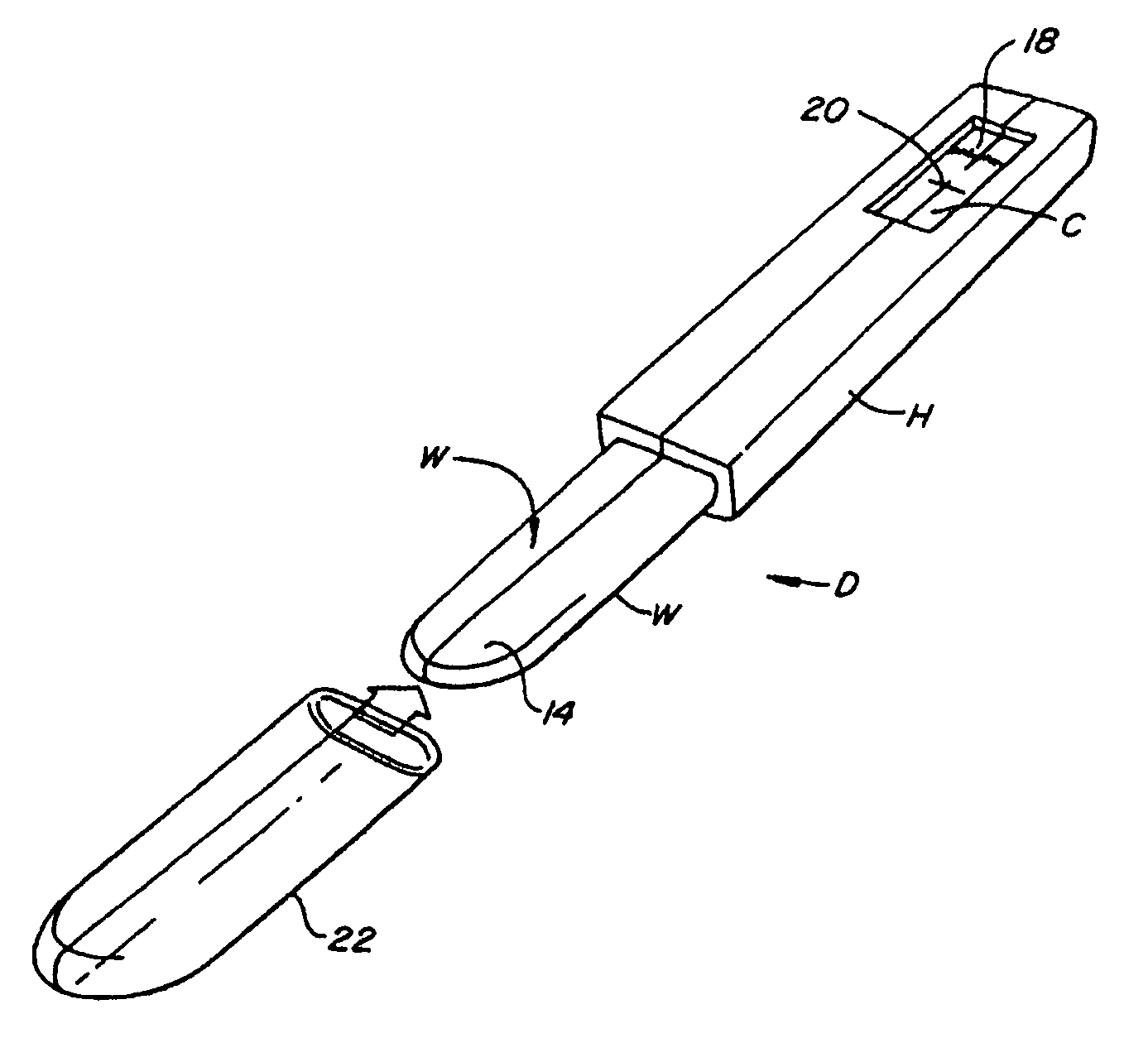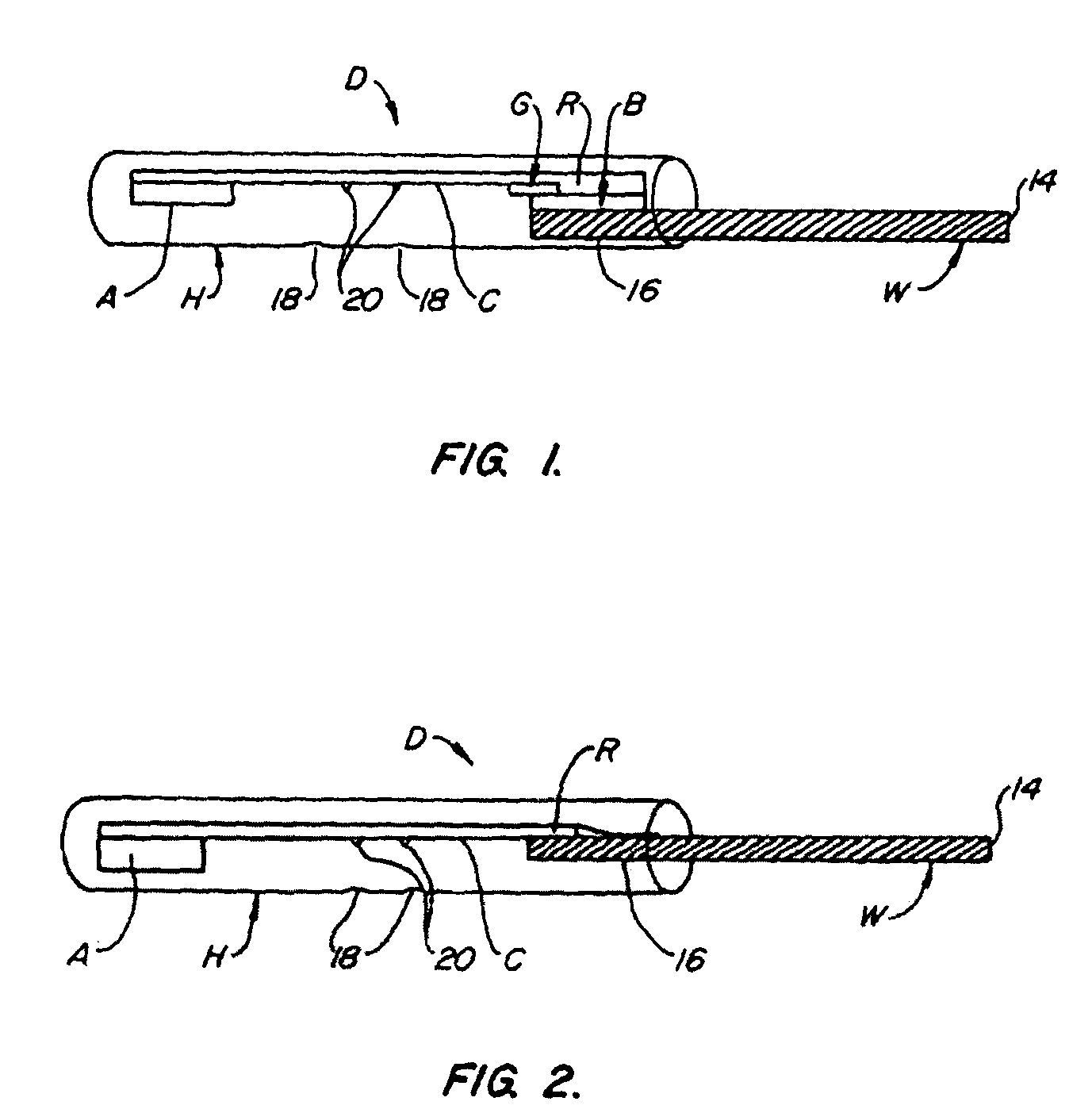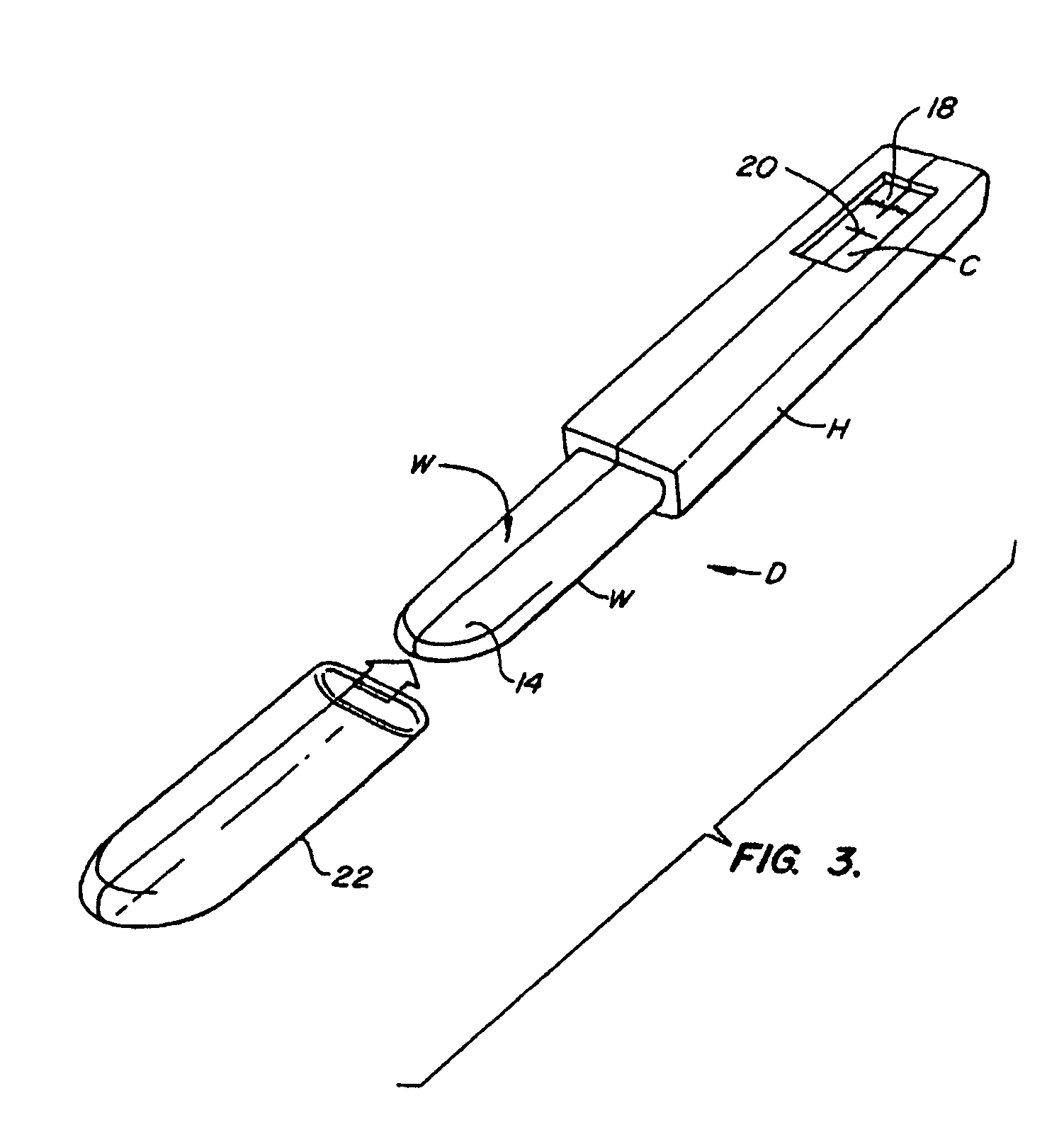Device for collection and assay of oral fluids
a technology for assaying devices and oral fluids, applied in the field of oral fluid assay, can solve the problems of requiring no subsequent sample manipulation after collection, devices and methods that require extremely etc., and achieves no complicated steps, low volumes of oral fluid, and no risk of sample contamination.
- Summary
- Abstract
- Description
- Claims
- Application Information
AI Technical Summary
Benefits of technology
Problems solved by technology
Method used
Image
Examples
Embodiment Construction
[0044]This invention provides a device for the rapid, one-step, collection and detection of analytes in oral fluid. In a preferred embodiment, the device is inserted into the oral cavity (e.g., preferably juxtaposed to the oral mucosa) where it absorbs oral fluid. After a period of time, the device is removed from the oral cavity and one or more indicators contained in the device are read out (e.g., by visual inspection or by detection in a “reader”) to provide an indication of the presence or absence, and / or quantity of one or more analytes of interest. The device thereby provides a rapid, one-step, non-invasive assay for the detection of one or more analytes of interest.
[0045]The assay devices and methods of this invention can be used for the detection positive or negative, and / or quantification) of virtually any analyte in oral fluid. Moreover, the devices and methods can be used to detect one or more analytes simultaneously. Such analytes may include, but are not limited to, ant...
PUM
| Property | Measurement | Unit |
|---|---|---|
| pore size | aaaaa | aaaaa |
| pore size | aaaaa | aaaaa |
| pore size | aaaaa | aaaaa |
Abstract
Description
Claims
Application Information
 Login to View More
Login to View More - R&D
- Intellectual Property
- Life Sciences
- Materials
- Tech Scout
- Unparalleled Data Quality
- Higher Quality Content
- 60% Fewer Hallucinations
Browse by: Latest US Patents, China's latest patents, Technical Efficacy Thesaurus, Application Domain, Technology Topic, Popular Technical Reports.
© 2025 PatSnap. All rights reserved.Legal|Privacy policy|Modern Slavery Act Transparency Statement|Sitemap|About US| Contact US: help@patsnap.com



